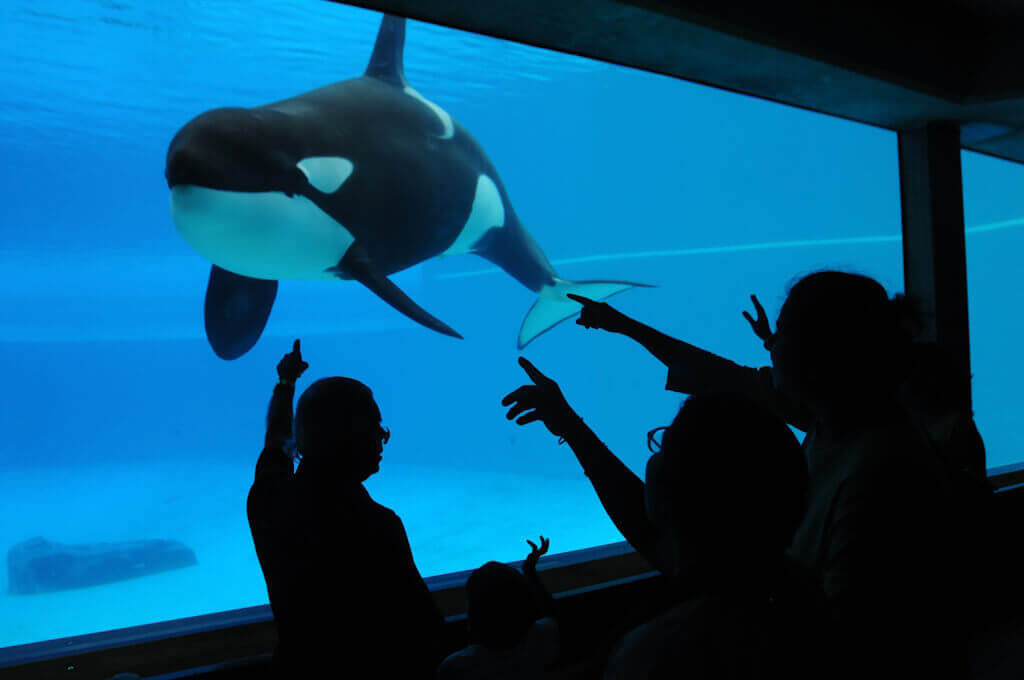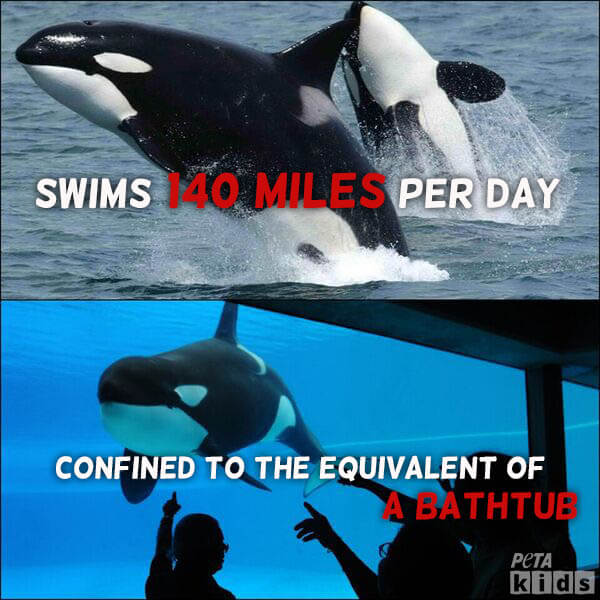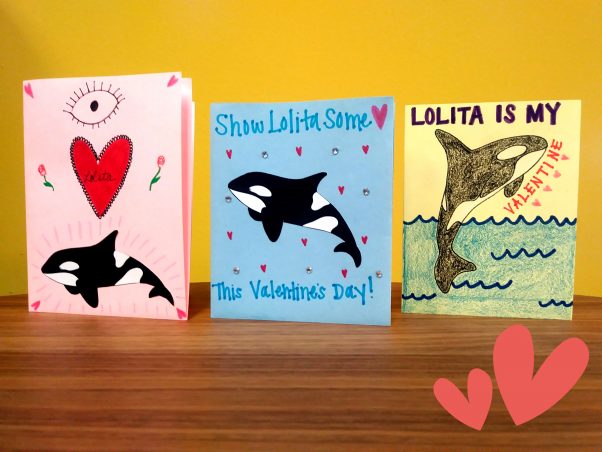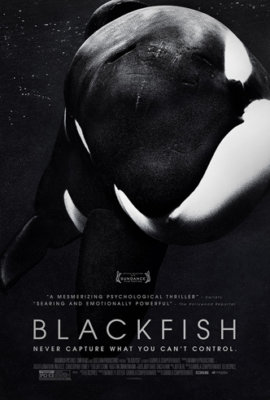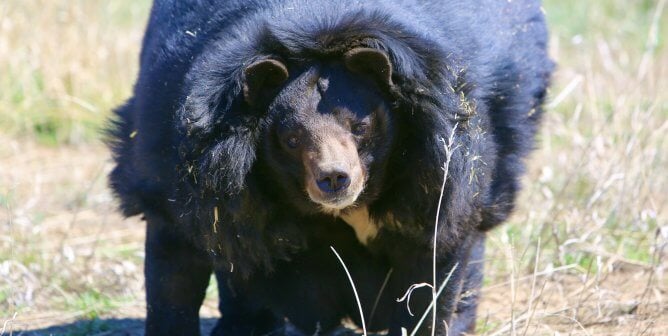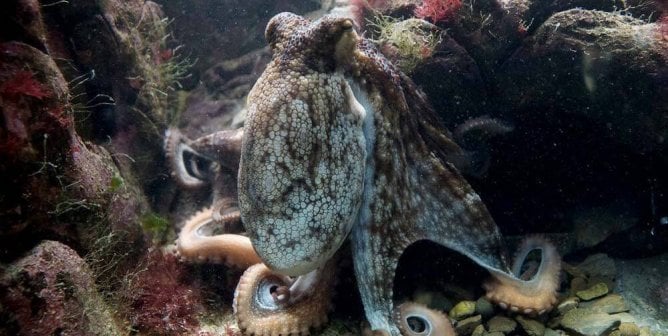Show Love for Orcas This Valentine’s Day
This lesson is designed to help teachers present animal rights issues to their students. If you’re an educator, please feel free to adapt this material to fit your needs—and contact us if you need help incorporating this activity into your curriculum.
Suggested grade levels: Kindergarten–12th grade
Objectives: Teach students about the history and plight of captive orcas Tilikum and Lolita and help create change through action. Students can write cards and letters to the Miami Seaquarium using what they’ve learned.
No animal deserves to be kept in miserable conditions. This Valentine’s Day, let’s remember Tilikum, the captive orca who died at SeaWorld, and use love and compassion to help Lolita, a captive orca at the Miami Seaquarium who will spend Valentine’s Day (and every day) without the company of another of her kind—lonely and deprived of all that’s natural and important to her.
To begin this activity, teach your students about the suffering endured by all orcas kept in captivity at marine parks like SeaWorld and the Miami Seaquarium. If you teach kindergarten through second grade, you can use this lesson plan to guide your class’s exploration of these issues, if you teach third through 5th grade, use this lesson, and if you teach seventh through 12th grade, use this one.
Following a general discussion on orcas in captivity, help your students learn about point of view by focusing on Tilikum’s individual story. Share some or all (depending on your students’ ages) of the following facts about him with your students to help them understand the emotions that he likely felt, his experiences, and what he was forced to endure throughout his life before he died in 2017:
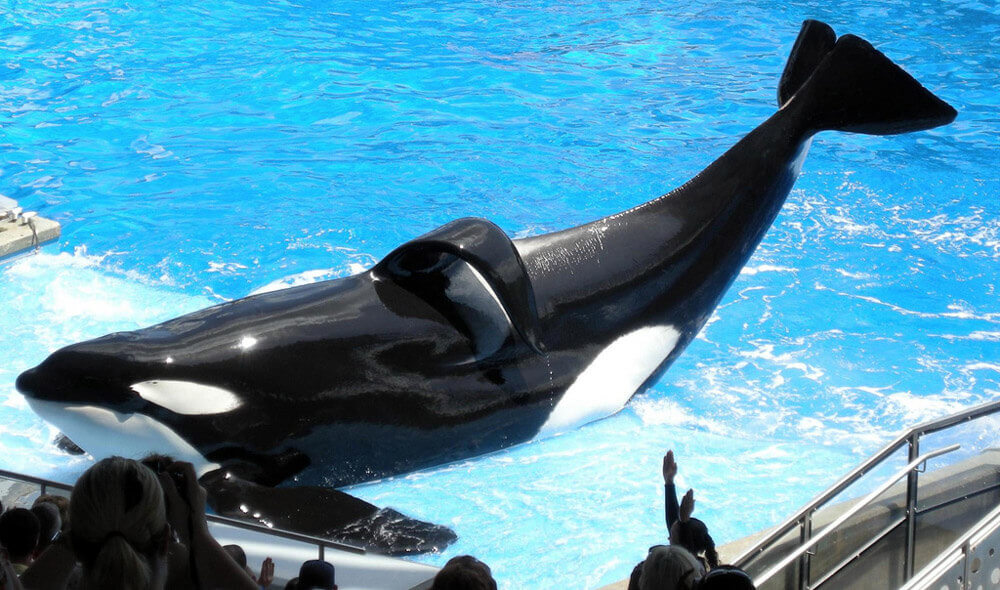
- Tilikum was captured in the ocean near Iceland in 1983 when he was only 2 years old. This was the last time he was with his family or in his ocean home.
- For almost a year after his capture, Tilikum was kept in a tiny concrete holding tank. During this period, he had nothing to do except swim in small circles and float listlessly in the water.
- He was eventually transferred to a rundown marine park in Canada, where food was withheld from him as a training technique. He was forced to perform every hour on the hour, eight times a day, seven days a week. The constant stress and exhaustion gave him stomach ulcers. He also endured painful attacks by two dominant female orcas, with whom he was housed even though they didn’t get along. In 1991, he killed a trainer out of stress-induced aggression.
- Tilikum was the largest orca in captivity, and SeaWorld quickly purchased him when he was put up for sale and began using him in its breeding program—even though he’d already killed a trainer. He fathered 21 calves, more than half of whom died prematurely. He spent more than 21 years at the park, where he was confined to a tank containing 0.0001 percent of the quantity of water that he would normally have traversed in a single day in nature.
- The stress of captivity drove Tilikum to exhibit abnormal repetitive behavior, including chewing on metal gates and the concrete sides of his tank. Because of this, most of his teeth were completely worn down.
- He was also driven to show aggression toward humans—he killed two more people after his first attack, including Dawn Brancheau, a trainer at SeaWorld who was known as one of its star performers and who always abided by the park’s safety guidelines around the orcas. Today, SeaWorld employees are no longer allowed to go into the water with orcas during performances.
- Following Brancheau’s tragic death, Tilikum was kept isolated in a tiny enclosure for a year. He reportedly floated listlessly in the water for hours at a time, a behavior that’s never seen in wild orcas. And after a year in isolation, he was forced to perform yet again.
- On January 6, 2017, Tilikum died in a barren tank at SeaWorld, far away from the vast ocean where he should have been swimming alongside his family members.
Like Tilikum, Lolita was taken from her family in the ocean when she was young—she was just 4 years old when she was captured. She’s spent over 50 years at the Miami Seaquarium, in the smallest orca tank in the world. With nothing else to do, she spends most of her days just floating listlessly. She has no orca companions.
Lolita certainly needs all the love she can get, so instead of (or in addition to!) having students make valentines for each other, have them take this opportunity to send a message to the Miami Seaquarium asking it to show compassion for Lolita by finally releasing her into a seaside sanctuary.
If You Teach Kindergarten Through Sixth Grade
After discussing Tilikum’s and Lolita’s stories, ask students empathy-building questions about the feelings that they would have if they were in their position. Here are some examples:
- How would you feel if you were taken away from your family against your will and never got to see them or return to your home again?
- What if the people holding you captive wouldn’t feed you if you made a mistake?
- Imagine being trapped in a bathtub for a year—or even for the rest of your life. What would you do? What emotions would you feel?
- Orcas in nature almost never act aggressively toward humans or other orcas. Why do you think Tilikum lashed out and hurt humans? Why do you think the dominant female orcas hurt and bullied him?
Then, ask students to create Valentine’s Day cards with construction paper and markers. Have them sign their names and add a personalized messages asking the Miami Seaquarium to show compassion for Lolita by releasing her into a seaside sanctuary, where she’ll never be forced to perform again.
After your students have finished making their valentines, mail them to the following address:
Miami Seaquarium
4400 Rickenbacker Cswy.
Miami, FL 33149
If You Teach Seventh Through 12th Grade
After discussing Tilikum’s and Lolita’s stories, ask students to research the history and effects of keeping orcas like them in captivity and to take notes on what they’ve learned, citing their sources. As a bonus, offer high school students extra credit if they watch Blackfish (which streams on Netflix!).
After students have done some research, ask them to create Valentine’s Day cards. Have them write messages on the cards explaining why they feel that Lolita deserves to be sent to a seaside sanctuary to live out her days as peacefully and naturally as possible, without ever having to perform again.
For a more extensive project, have students write one-page letters to the Miami Seaquarium based on their research, citing the facts that show how horribly orcas suffer in captivity.
After your students have finished writing their cards or letters, mail them to the address above.
*****

